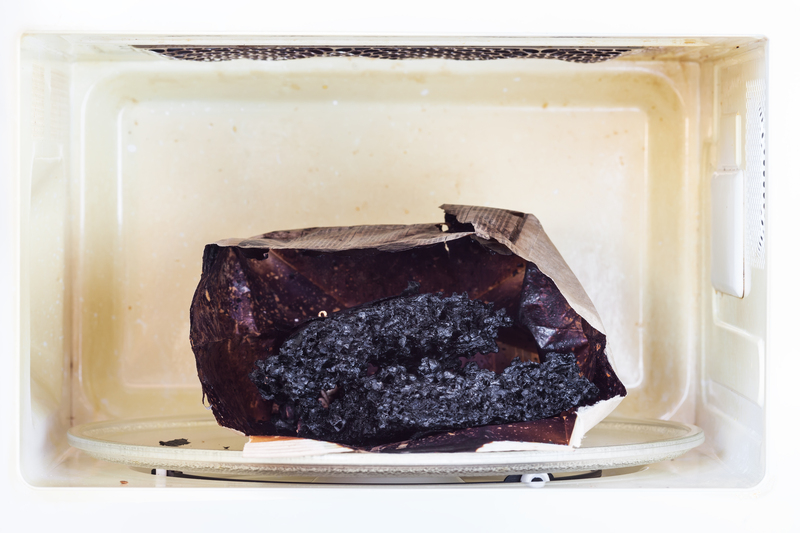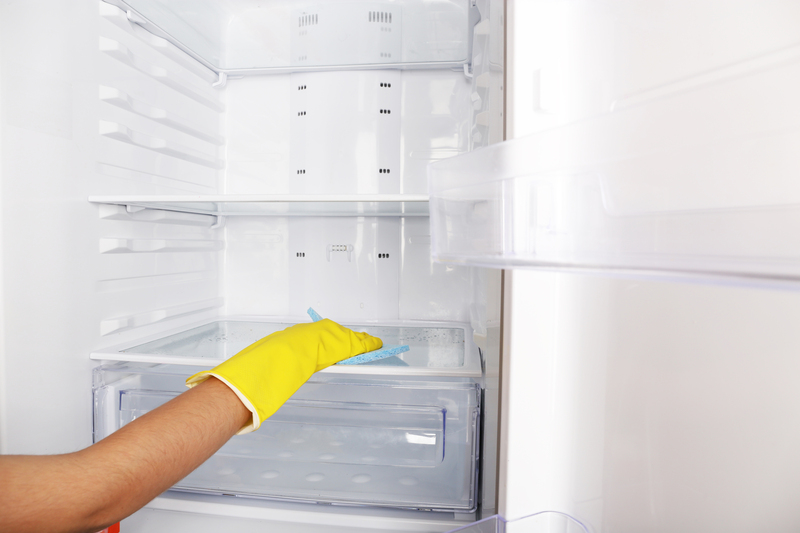Proven Cleaning Methods to Refresh Velvet Curtains Without Fading
Posted on 03/06/2025
Proven Cleaning Methods to Refresh Velvet Curtains Without Fading
Velvet curtains add a touch of luxury, warmth, and sophistication to any room. Their rich texture and vibrant colors make them a centerpiece in home decor. However, cleaning velvet curtains requires special care to prevent damage and fading. If you're searching for proven cleaning methods to refresh velvet curtains without fading, you've come to the right place! In this comprehensive guide, we'll explore a range of expert-approved techniques and velvet curtain cleaning tips to ensure your curtains stay fresh and radiant for years to come.
Understanding Velvet Fabric
Velvet is a unique material known for its soft, plush surface and enchanting sheen. Most velvet curtains are made from cotton, silk, polyester, or a blend. Each type of velvet requires gentle handling, as the pile (raised fibers) can easily be crushed, and harsh chemicals or agitation can cause permanent marks or fading.
- Cotton Velvet: Offers a natural look but is more prone to creasing and fading if exposed to sunlight or harsh cleaning agents.
- Polyester Velvet: More resistant to fading and wrinkling but can still be easily damaged by inappropriate cleaning methods.
- Silk Velvet: Exceptionally delicate; best handled by professional cleaners.

Why It's Important to Clean Velvet Curtains Properly
Velvet curtains act as dust and allergen magnets due to their textured surface. Over time, dust, hairs, and other particles build up, dulling their appearance and potentially causing allergies or odors. However, improper cleaning techniques may:
- Cause fading: Harsh chemicals, excessive sunlight, or aggressive scrubbing can strip color.
- Crumple the pile: Over-wetting or using rough brushes can flatten the velvety texture.
- Leave water marks: Inadequate drying or soaking velvet can create unsightly marks.
Therefore, it's crucial to use safe, proven velvet curtain cleaning methods to refresh your curtains and preserve their luster.
Pre-Cleaning Steps for Velvet Curtains
Regardless of your cleaning method, prepare your curtains with these essential steps:
- Check Manufacturer's Instructions: Always review the care label for cleaning recommendations. Some velvet drapes are dry-clean only.
- Test in an Inconspicuous Area: Before using any cleaning solution, test it on a small, hidden spot to ensure it doesn't cause discoloration.
- Remove Dust and Debris: Use a vacuum cleaner with an upholstery attachment or a lint roller to gently lift dust and dirt from the surface.
Following these pre-cleaning steps reduces the risk of fading or damage during the deep cleaning process.
Safe and Effective Velvet Curtain Cleaning Methods
Let's discover several proven cleaning methods to refresh velvet curtains without fading. We'll include both routine maintenance and deep cleaning strategies.
1. Regular Maintenance: Vacuuming and Brushing
- Vacuuming: Use a soft brush attachment on your vacuum to remove dust and prevent buildup. Always vacuum in the direction of the nap (the way the velvet fibers naturally lay) to maintain the pile.
- Brushing: For light maintenance, use a soft, clean clothes brush or a velvet upholstery brush to gently sweep the surface and revive the sheen.
Routine vacuuming and brushing help keep your velvet curtains fresh, minimize allergens, and prevent deep-seated stains, eliminating the need for frequent washes that could cause fading.
2. Spot Cleaning Stains on Velvet Curtains
Address spills and stains immediately to prevent them from setting in. Here's how to gently spot clean velvet curtains without fading:
- Blot, Don't Rub: Use a white, absorbent cloth or paper towel to gently blot the stain. Never rub, as it can push the stain deeper and crush fibers.
- Mild Solution: Mix a few drops of gentle liquid dish soap with lukewarm water. Dampen a microfiber cloth with the solution (never soak it) and gently dab at the stain.
- Rinse: Wipe the area with another cloth dampened with clean water to remove any soap residue.
- Dry: Absorb excess moisture with a dry towel, then let the area air dry. Avoid direct sunlight or heat sources to prevent fading or shrinkage.
Tip: If in doubt about your cleaning solution, test it first on a hidden section to ensure it does not affect color or texture.
3. Steam Cleaning Velvet Curtains
Steam cleaning is a highly recommended, gentle method for refreshing velvet curtains without fading. The heat and moisture revive the pile, remove odors, and eliminate dust mites, without over-wetting the fabric.
- Remove or Leave Hanging: You can steam velvet curtains while they're hanging for ease and to prevent creasing.
- Handheld Steamer: Fill a garment steamer with distilled water (to avoid mineral stains). Hold the steamer a few inches from the surface and move it in vertical strokes, following the direction of the pile.
- Allow to Dry: Let the curtains air out completely before closing them or bunching them together.
Never soak velvet curtains or use a steam cleaner that sprays or saturates the fabric. Gentle steaming is ideal for deodorizing and removing minor wrinkles.
4. Hand Washing Velvet Curtains
While machine washing velvet curtains is rarely recommended, some modern poly-velvet blends may be safely hand-washed if permitted by the care label.
- Fill a Large Tub: Use lukewarm water and a mild detergent specifically designed for delicates.
- Gentle Agitation: Submerge curtains and gently swish the fabric for a few minutes. Never wring, twist, or rub vigorously.
- Rinse Thoroughly: Drain the tub and refill with clean water to remove all soap residues.
- Press Out Water: Lay the curtains flat on a towel and roll them up to absorb extra moisture. Never wring or hang wet velvet as this can stretch and deform the fibers.
- Air Dry: Lay flat or hang with ample support, keeping out of direct sunlight or heat. Fluff the pile gently with your hands as it dries.
5. When to Dry-Clean Velvet Curtains
For silk velvet curtains, antique velvet, or heavy, lined drapes, professional dry-cleaning is the safest choice. Dry-cleaners use specialized solvents and equipment that won't fade colors or crush texture.
- Always select a reputable dry-cleaner with experience handling delicate fabrics.
- Request gentle, velvet-specific handling and avoid unnecessary pressing.
Warning: Home dry-cleaning kits are usually not recommended for velvet due to potential inconsistency and risk of damage.
How to Prevent Fading and Prolong Your Velvet Curtains' Life
Proper cleaning is just one step to ensure your velvet curtains retain their stunning colors and plush finish. Use these practical tips for preventing fading:
- Limit Sun Exposure: Velvet is extremely sensitive to UV rays. Place curtains away from direct sunlight, use sheer liners, or opt for UV-blocking window films.
- Use Gentle Products: Always choose mild, color-safe detergents and avoid bleach, harsh chemicals, or fabric softeners.
- Avoid Over-Washing: Spot clean minor areas and deep clean only as needed (generally once or twice a year) to avoid unnecessary stress on the fabric.
- Store Properly: If you need to store velvet curtains, roll or hang them in a breathable cotton bag. Never fold tightly, as this can cause permanent creases.
- Fluff the Pile: Use your hands or a soft brush to gently raise the fibers after cleaning or steaming to maintain the velvet's softness and sheen.

Frequently Asked Questions About Cleaning Velvet Curtains
Can I machine wash velvet curtains?
In most cases, machine washing is not recommended, as the agitation can flatten the pile and cause fading. Only certain polyester or synthetic blends with a specific care label may be washed on a gentle cycle in cold water and placed inside a mesh bag. When in doubt, opt for hand washing or professional cleaning.
How often should I clean my velvet curtains?
Routine maintenance like vacuuming or brushing can be performed weekly or biweekly. Deep cleaning (either steam or professional dry cleaning) generally suffices once or twice a year, or as needed if the curtains are exposed to strong odors or visible soiling.
What should I do if my velvet curtains have a persistent odor?
Hang the curtains outdoors in shaded, fresh air for a few hours. Avoid direct sunlight. If the smell persists, steam them lightly, or consider professional cleaning for tough odors like pet smells or smoke.
Is it safe to iron velvet curtains?
Direct ironing is never recommended. If you need to remove wrinkles, steam while hanging or use a steam iron held a few inches above the surface. Use the lowest heat setting, and never allow the hot plate to touch the fabric directly.
Why did my velvet curtains develop marks after cleaning?
Water spots or streaks occur when velvet is over-wet or not dried evenly. Always blot with a dry towel, avoid excessive water, and let the fabric air dry fully before rehanging. Steam can help "revive" marks by fluffing the pile.
Summary: The Best Ways to Revitalize Velvet Drapes Without Fading
Velvet curtains deserve the highest standard of care to maintain their elegance and beauty. Always remember:
- Read care labels and test cleaning solutions first.
- Vacuum or brush often to minimize deep cleaning needs.
-
Use gentle, proven velvet cleaning methods:
- Spot clean stains with mild soap and water.
- Refresh texture and appearance using steam cleaning.
- Hand wash only if safe for your velvet type, avoid wringing/twisting.
- Consider dry-cleaning for silk, vintage, or lined velvet curtains.
- Protect curtains from direct sunlight, strong detergents, and over-washing to avoid fading.
By following these proven cleaning methods to refresh velvet curtains without fading, you'll enjoy curtains that stay soft, vibrant, and luxurious throughout their lifespan. Consistent, gentle maintenance is the secret to preserving the unmistakable glamour that velvet brings to your space. When in doubt, consult with a professional upholstery or drapery cleaner for the best results.
Ready to refresh your velvet curtains? Start with these expert tips today and experience the difference clean, well-cared-for velvet can make in your home!


